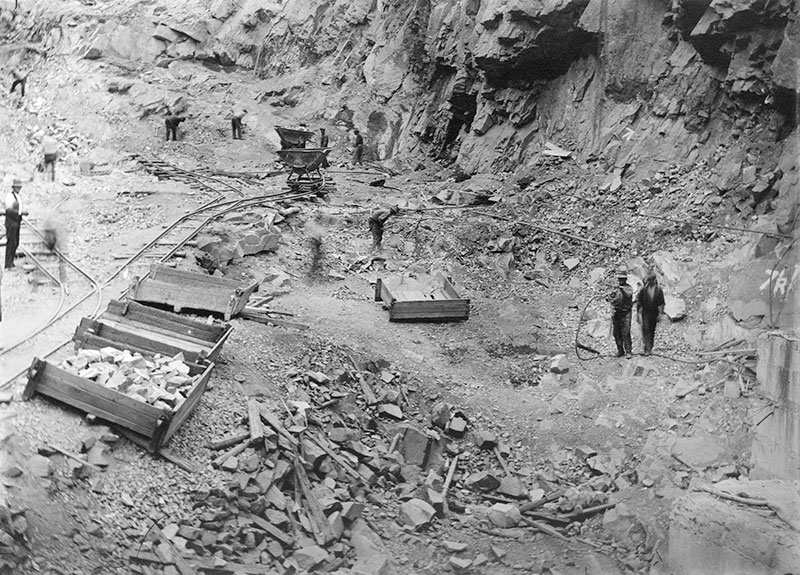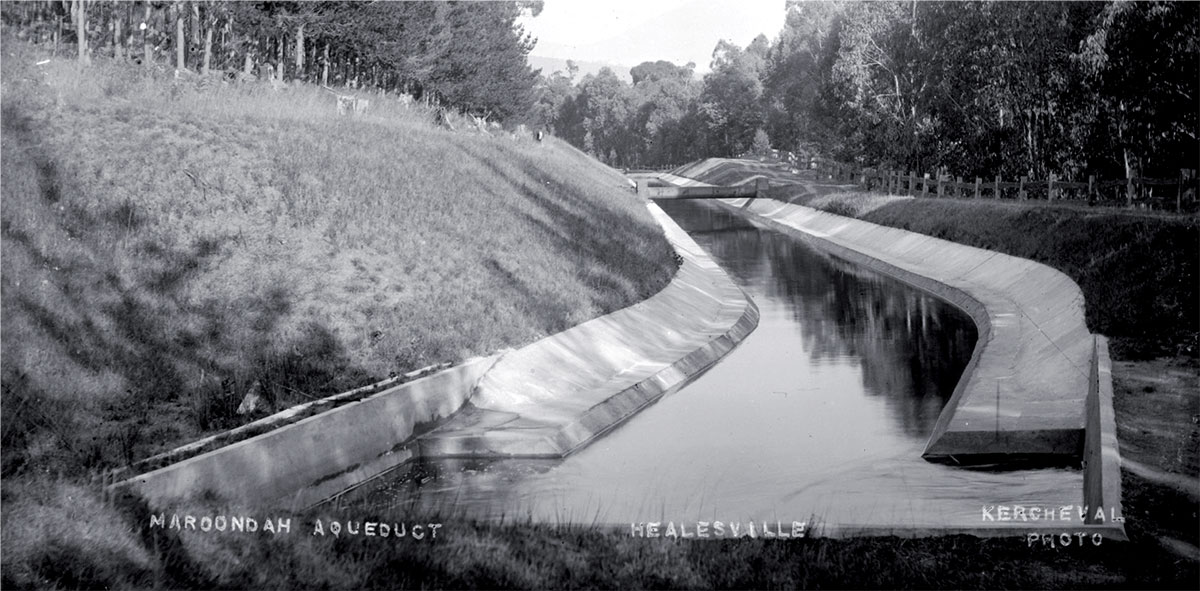Maroondah Aqueduct
Completed in 1891, Maroondah Aqueduct is the oldest of the two aqueducts in the Maroondah water supply system.
The aqueduct originally consisted of:
- 41 kilometres of open cement channel – the first time cement had been used in this type of construction in Victoria
- 11 tunnels
- 15 kilometres of inverted syphons
- a pipe bridge over the Plenty River, carrying water over low areas, gorges and ravines.
Much of this is still functional, providing Melbourne homes and businesses with clean water.
View 360-degree panoramas of the aqueduct below, using the top-left menu to move between locations, or continue reading to learn how it was built and where the water goes.
Building the aqueduct
Maroondah Aqueduct was built by gangs of labourers during the 1880s, who worked in all types of weather: from the searing summer sun to the biting frost of winter. They lived on site in tents, working six days a week, and moved camp as work progressed.
The work was hard, with long days and uncomfortable nights. Despite the hardship, the aqueduct was successfully completed in 1891.
Water sources
Historically, the aqueduct carried water from the Watts River and Graceburn Weir. The water flowed west for 66 kilometres, using gravity, until it met the Yan Yean system at the Junction Basin in Preston.
Water is now supplied from Maroondah Reservoir and feeds into Sugarloaf Reservoir via the Yering Gorge Pumping Station.

